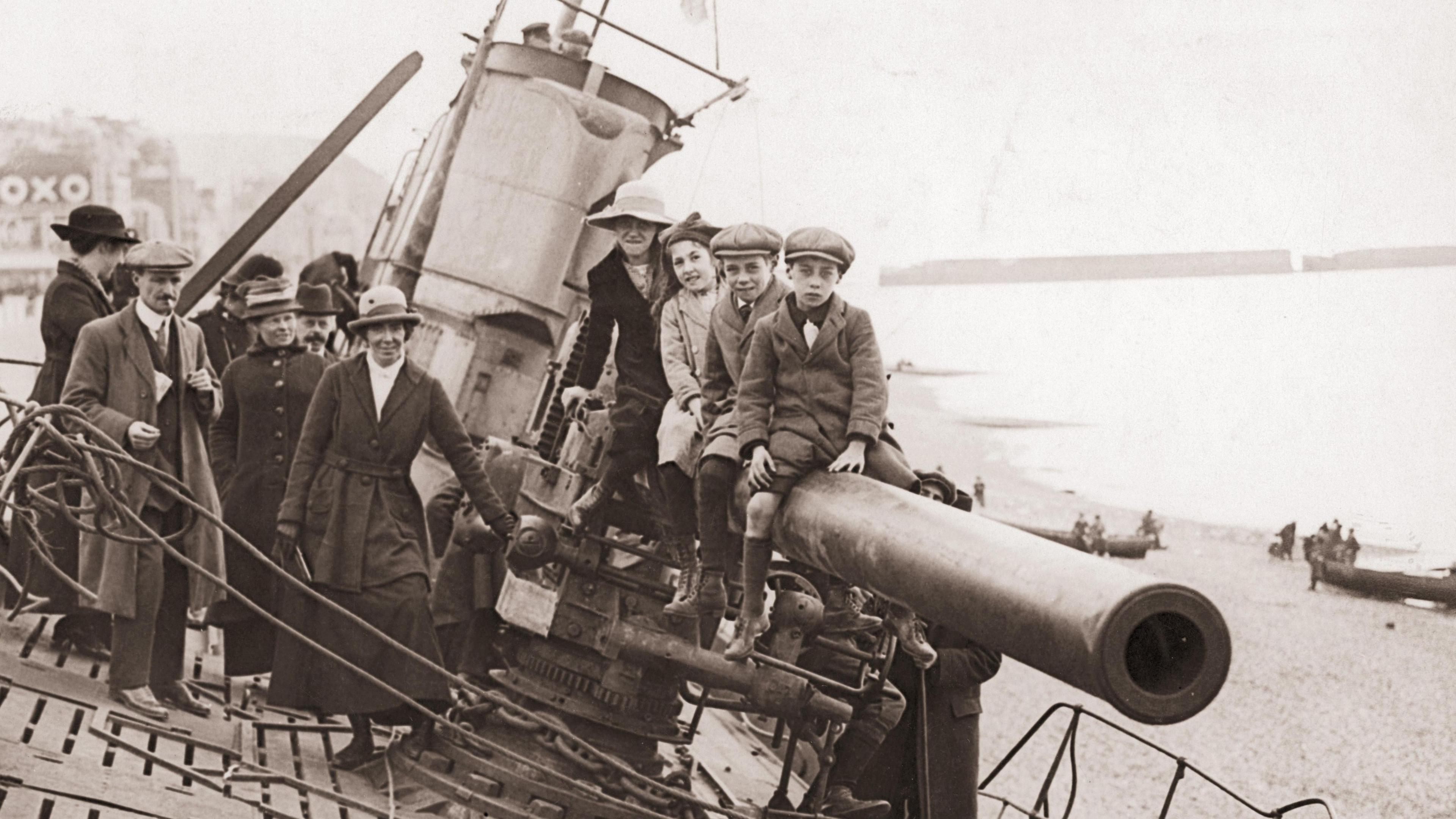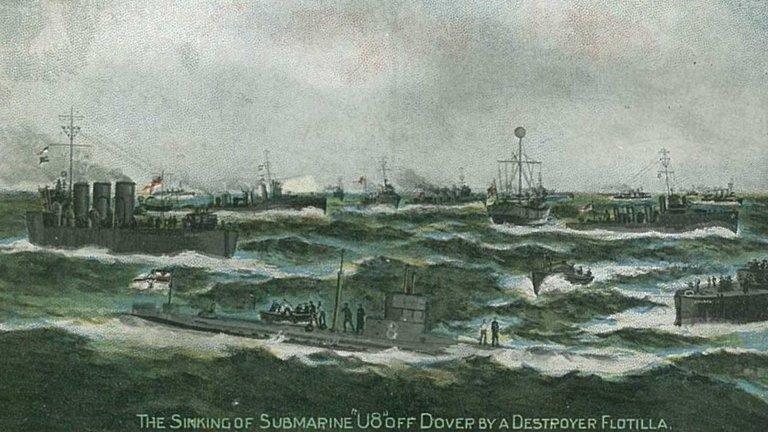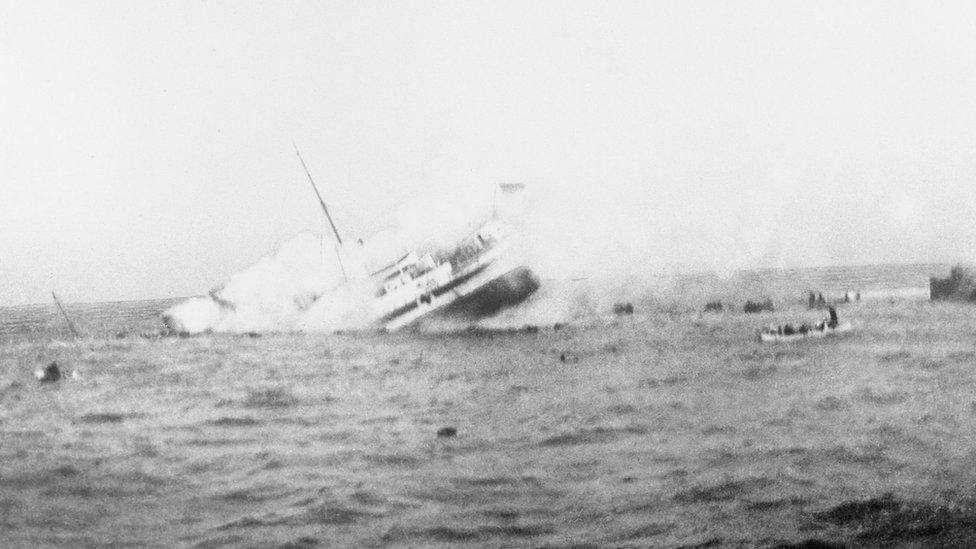'Silent deadly killers': South East's U-boat legacy

The U-118 submarine became an unexpected tourist attraction when it washed ashore in 1919
- Published
During the First World War, German submarines conducted a reign of terror over Allied shipping.
Little remains of these fearsome weapons of war and yet U-boats continue to have a remarkable relationship with the South East.
Not least to the people of Hastings, who on 15 April, 1919, woke up to find a giant craft stranded on the beach, opposite the Queens Hotel.
"The public knew of submarines as the silent deadly killers, the death toll they left behind was huge and now they were face to face with one", said Alice Roberts-Pratt, senior curator at Hastings Museum Art Gallery.
Grimly effective during the conflict, they sank more than 5,000 ships and claimed the lives of 15,000 allied sailors.
But following the armistice, the German fleet was surrendered to the allies with most vessels gutted for much needed metal and components.
One craft, U-118, was being transferred to France through the English Channel when it cast adrift during stormy weather, ending up on the Hastings shorefront.
The 80m long vessel became an unlikely new tourist attraction, according to Ms Roberts-Pratt.

The Hastings submarine was dismantled and few fragments remain today
She said: "The Admiralty actually allowed Hastings to charge people for these tours and all the fees taken went towards a fund for the local heroes coming back from the First World War."
But the venture was to end in tragedy, according to Alice.
Two of the tour guides fell gravely ill - it's thought the corroding batteries had released poison gases.
It was cut up for scrap with just a few fragments remaining - with the speaking tube now housed at Hastings Museum and Art Gallery today.
'Why did it end up there?'
One of the only examples of the vessel has remained intact in the mud of the River Medway, off the Isle of Grain, for more than a century.
Given the right time and the right tides the rotting hulk of a German World War One submarine can be reached by boat.
But to this day there's confusion as to its exact identity.
Hefin Meara, maritime archaeologist with Historic England believes it is "almost certainly" one of three UB class subs known in that area - UB144, UB145 and UB150.

The remains of a former German World War One submarine can be found in the Medway
He said: "Why did it end up there? We are not sure exactly, it was probably being towed somewhere else and the tow line broke and it drifted off.
"I imagine it was not cost effective to get it out again so it was left there and abandoned."
The outer casing of the sub and inner workings had been stripped for parts - and most likely recycled, according to Mr Meara.
He said: "We have evidence to show that some of them were used in power stations, in cement works and places like that.
"What we can learn from this is the fascinating process of recovery and dismantling that took place.
"It was a huge industry that helped fuel the economy and the industrialisation of the south east after the war."
Follow BBC Kent on Facebook, external, on X, external and on Instagram, external. Send your story ideas to southeasttoday@bbc.co.uk, external.
Related internet links
- Published22 July 2016

- Published19 October 2021

- Published23 February 2017
